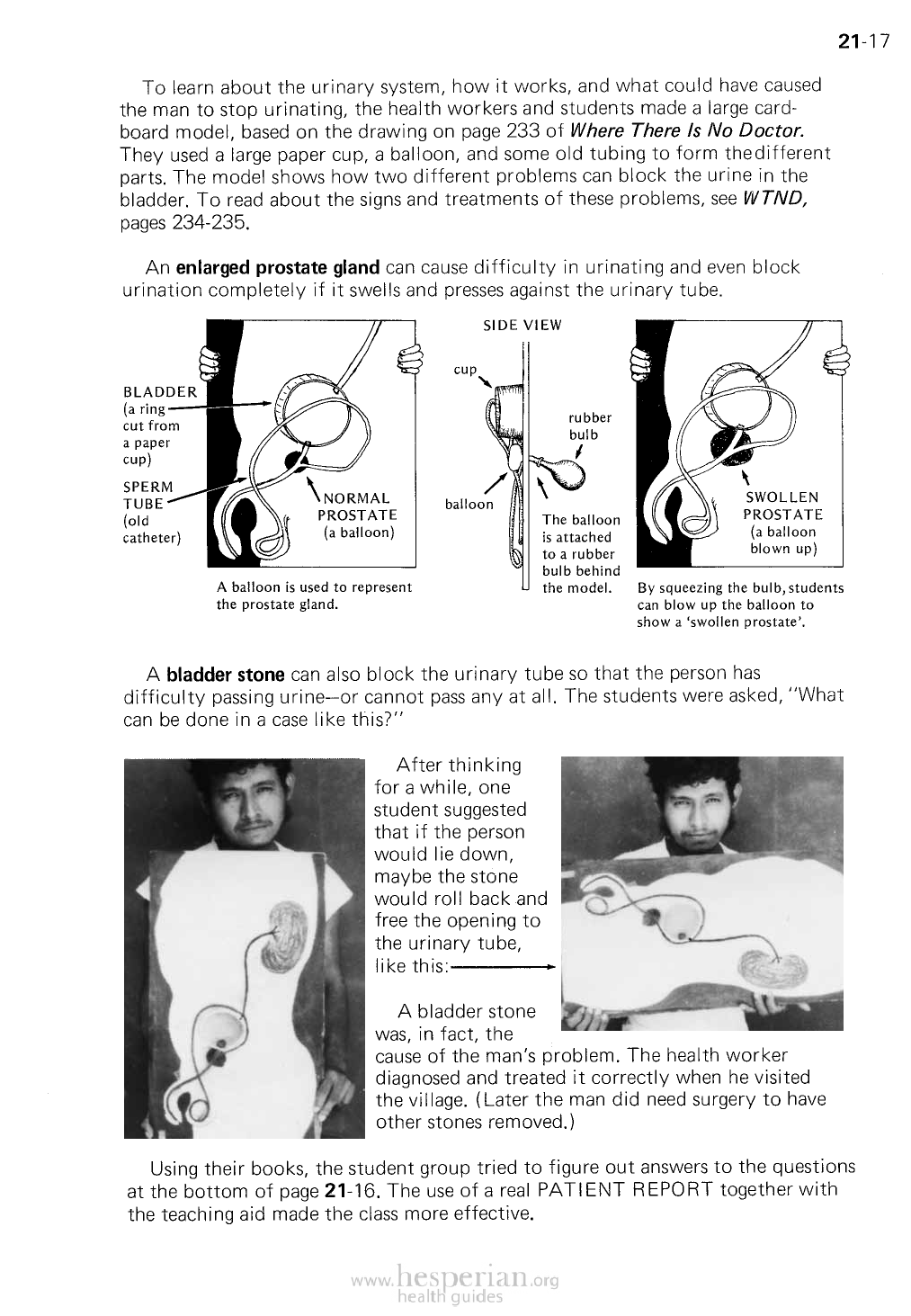
21-17
To learn about the urinary system, how it works, and what could have caused
the man to stop urinating, the health workers and students made a large cardboard
model, based on the drawing on page 233 of Where There Is No Doctor. They
used a large paper cup, a balloon, and some old tubing to form the different parts.
The model shows how two different problems can block the urine in the bladder. To
read about the signs and treatments of these problems, see WTND, pages 234-
235.
An enlarged prostate gland can cause difficulty in urinating and even block
urination completely if it swells and presses against the urinary tube.
SIDE VIEW
BLADDER
(a ring
cut from
a paper
cup)
SPERM
TUBE
(old
catheter)
cup
balloon
A balloon is used to represent
the prostate gland.
rubber
bulb
The balloon
is attached
to a rbber
bulb behind
the model.
By squeezing the bulb, students
can blow up the balloon to
show a ‘swollen prostate’.
A bladder stone can also block the urinary tube so that the person has difficulty
passing urine—or cannot pass any at all. The students were asked, “What can be
done in a case like this?”
After thinking
for a while,
one student
suggested that if
the person would
lie down, maybe
the stone would
roll back and free
the opening to the
urinary tube like
this:
A bladder stone
was, in fact, the cause of the man’s problem. The
health worker diagnosed and treated it correctly
when he visited the village. (Later the man did need
surgery to have other stones removed.)
Using their books, the student group tried to figure out answers to the questions
at the bottom of page 21-16. The use of a real PATIENT REPORT together with the
teaching aid made the class more effective.